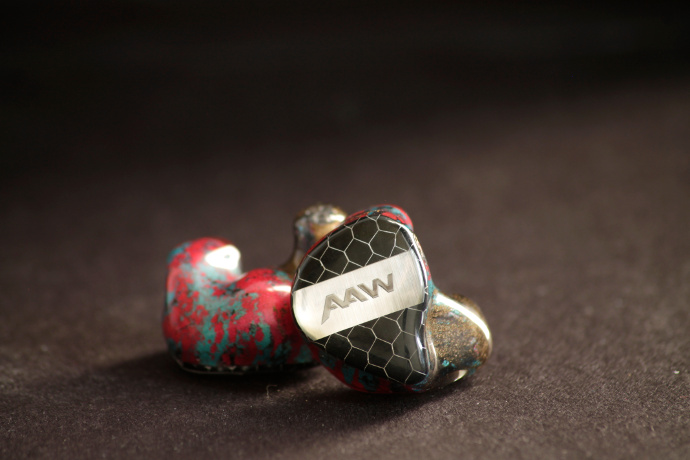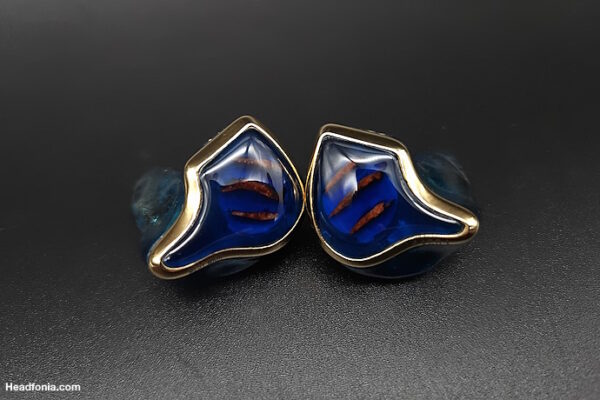Build Quality:
[responsivevoice_button]
AAW 3D prints their custom IEMs, and therefore I did not have to send them a physical impression of my ears, but rather an SLT file containing 3D scans of them. That not only saves time, but also comes in handy when you’re working on the detailing and contouring of the CIEMs.
The entire shell of my set is incredibly smooth, there is no single bubble, no marks and no sign of the 3D process. It looks just perfect. The body and face plates are closed perfectly and I could not spot a bit of residual glue anywhere. My first AAW CIEM, the W900, was not like that, and I’m really glad to see that AAW has made such a progress since then.
Halcyon’s 2-pin sockets are flushed, which enables me to roll any cable I want on it. The surface of Halcyon is nicely smooth, and I didn’t detect any sharp edges or spilled lacquer anywhere. The body of Halcyon is very small, much smaller than any of my other CIEMs. The canals also are shorter than I’m used to from other CIEMs. This makes for a very comfortable fit, but for me it took some getting used to.
I do have an issue with fit of both sides though. I can break seal on rather easily, and I suspect an additional layer of lacquer will resolve this. It was not a big issue for me, therefore I have not sent it back for refit just yet. I will after this review though.
Other than that I have no problems with my Halcyon.
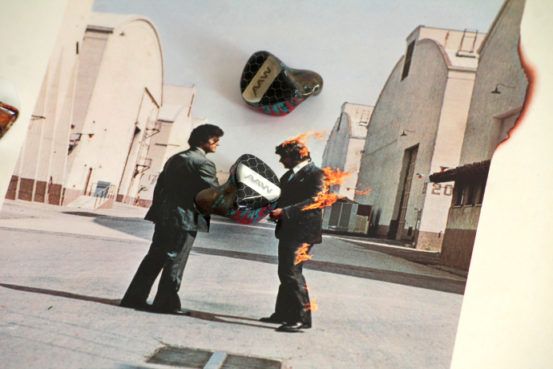
AAW Halcyon
Sound:
The following impressions are based on extensive listening sessions with the Lotoo PAW Gold Touch and PAW 6000. As well as with the A&K SP1000M, the Chord Hugo2 and other sources. Halcyon does not pick up any hissing from my sources and stays quiet at all times. It doesn’t require a massive load of power to shine either, as it plays nice with all of my inventory. As mentioned earlier in this review my sample came with the full sub-bass setting. So please take this into account for the following lines.
Overall, the Halcyon has a smooth and relaxed sound with a slight V- to L-shaped signature. Sub-bass definitely enjoys high prominence, while the other frequencies seem pushed back until it reaches the upper midrange. Here you have a dip again that continues to the lower treble regions. The Halcyon never sounds overly bright in the top-end though. Just like AAW’s flagship Canary, Halcyon seems to go a risk-free route.
Halcyon has a nicely punchy and dynamic bass response, with lifted sub-bass and linear mid and upper bass. The extension is good, while it probably could go deeper though. Bass is organic in sound, but misses out on density and weight for my taste. Lows have good body overall, but might be too thin for people who want more.
Mids are smooth and just slightly recessed behind bass. There is proper warmth in the lower midrange up to the lower regions of the center mids. But to me they are again missing some weight and density. Texture is quite nice, with a softened touch. Instruments have good realism in them, but again miss out on weight. They seem a bit thin at times. Vocals can become pushed back behind the bass and treble, which makes them sound slightly distant. In terms of richness upper-mids have the most to me.
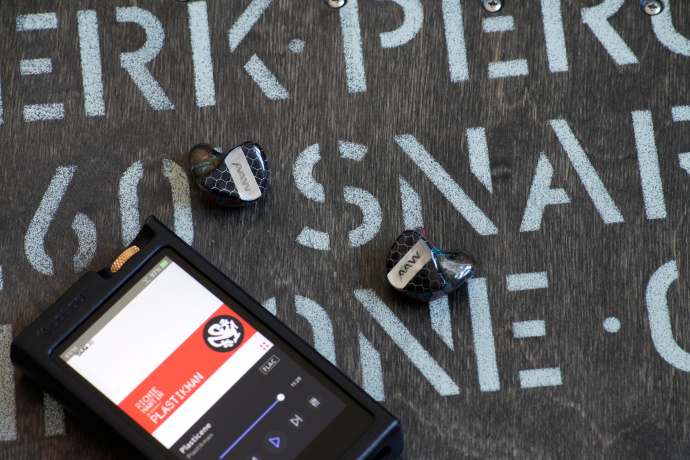
AAW Halcyon
Treble is inoffensive yet energetic. What I like about the implementation of the quad e-stats here, is how clean the highs sound, while not becoming too forward. Treble does just slightly stand above mids, which enables the Halcyon’s close to V-shape sound. Extension wise there is room for improvements though. Halcyon does not reach out for the highest of highs. You don’t have to worry about sibilance, harshness or extreme edges with the Halcyon. It stays clear of these issues as it displays a properly smooth treble.
Halcyon is a solid but mediocre performer when it comes to technicalities. It creates a nicely spread sound-stage, but won’t ever reach the borders of your head. The sound always comes from within your head. The AAW images quite well but could do with a sharper separation and a blacker background. Halcyon always has an existing connection between the instruments, which interlaces them. It brings out good levels of details, but don’t expect it to present you every little bit of information. Halcyon has good resolution and layering, but again isn’t exactly class leading.
Comparisons:
In the last two years we have seen a lot of hybrid IEMs launched. While at first the companies seemed to make simple dynamic driver and BA driver setups, they are now rushing into the e-stat race. Every brand is introducing new products with electrostatic tweeters. Advanced AcousticWerkes’ own flagship, the Canary, uses a tri-level hybrid setup.
In this chapter we will see how the Halcyon compares against other hybrid monitors. All comparisons were done using the respective stock cables. Mentioned prices are in USD and for the custom built versions. Some companies offer cheaper prices for the universals.
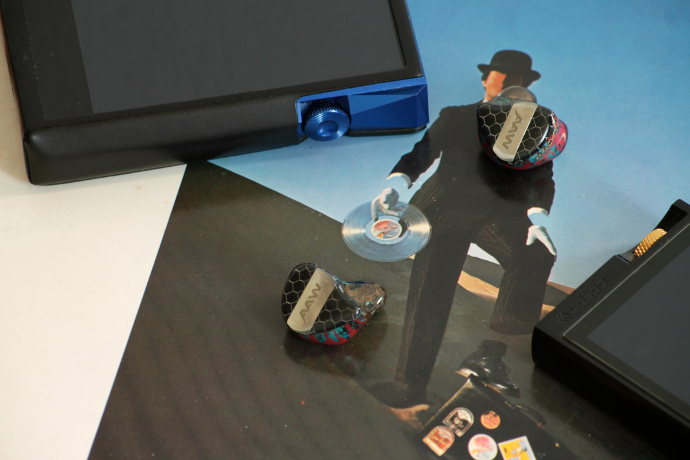
AAW Halcyon
Again, please keep in mind, my sample came with full sub-bass setting. The bass-response differs depending on the installed module.
AAW – Canary (2DD/4BA/2e-stat; 2,499$)
When comparing AAW’s Halcyon with their Canary side by side, it’s more than obvious they come from the same house. There is a distinctive key-signature that binds them. Both monitors have a nicely relaxed and smooth sound, that doesn’t seem to make many mistakes. Canary and Halcyon both play a safe game where they just try to make it to the end without taking any risks.
The biggest difference of the two is certainly in technical performance. The Canary clearly wins here to me. It has higher resolution throughout the entire spectrum. It layers better and cleaner, has sharper imaging and creates a larger scaled sound-stage. Canary definitely comes out on top when we’re talking sheer control and structure. In the end, for 900$ more it also should.
Halcyon does have a harder punching low end, while Canary seems smoother and even a bit more relaxed. Canary puts more weight into the mid-range, which makes instruments appear more solid and denser. Its sound is more physical and organic with a fuller and meatier presentation. Instruments seem more life-like on the Canary than on Halcyon.
Canary uses its dual e-stats for the highest registers only, while Canary takes use of the quad setup for the entire treble response. While both monitors seem to have a similarly extended top-end, it is Halcyon that sounds cleaner and a bit more up-front with it. Canary often hides its treble behind the midrange, but Halcyon gives highs more presence, making them stand out clearer. Halcyon sounds cleaner and even richer up top to me.
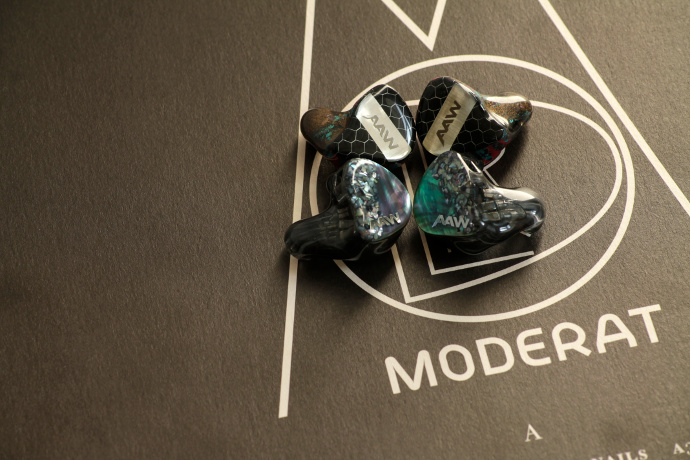
AAW Halcyon and Canary
64 Audio – N8 (1DD/8BA; 1,799$)
The N8 is one of the last traditional hybrids in my collection. It uses a tubeless dynamic driver for lows, six balanced armatures for mids, a single high-mid driver and a hat-less tia high driver. To this day the N8 remains 64 Audio’s only hybrid CIEM.
64 Audio created the N8 in collaboration with Nathan East, a renowned bassist. Keeping that in mind the tuning choices are quite obvious. The N8 has a more forward sounding low end. It puts more focus on the mid and upper bass regions, while the Halcyon produces a more driving sub-bass. Halcyon has a more relaxed and smoother bass response, while the N8 gives for a faster and more energetic low end.
Mids are more resolved on the N8, which makes instruments appear separated with a cleaner cut. The N8 has a darker background, while the Halcyon binds musicians with some noise. The N8 creates a wider and deeper sound-stage. It brings out finer details and presents them in a more forward manner. Instruments seem a bit thicker and denser on the N8. Vocals have higher density and a fuller body on the 64 Audio CIEM as well. The Halcyon has thinner notes overall.
The treble of the tia driver is something unique to me. It is fast, energetic and well softened. To me neither of the two create a harsh or unpleasant top-end. The N8 however, extends wider into the upper registers. It has more presence above 10kHz. The Halcyon on the other hand has a cleaner, richer and more glowing treble. Out of the two, it is even less harsh.
Overall, the Halcyon is more balanced than the N8, which has a cleaner v-shape in its signature.
It continues on page three!





